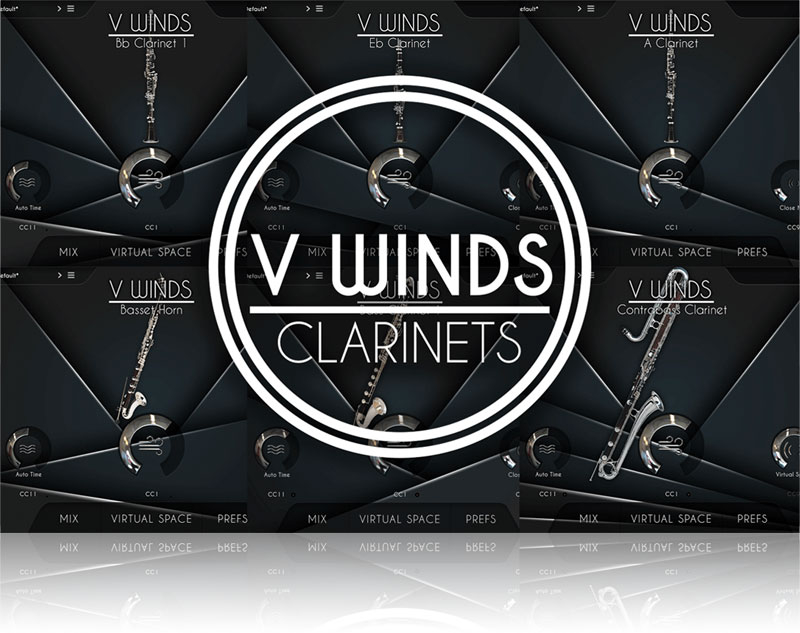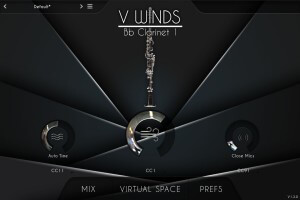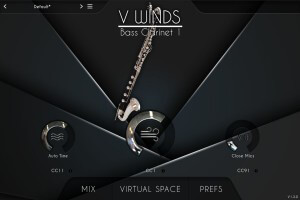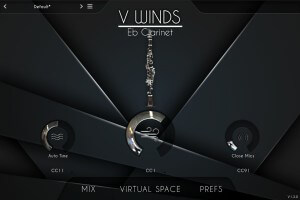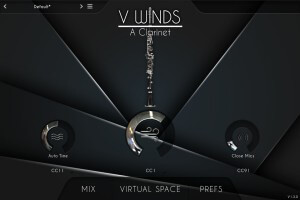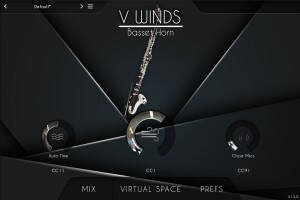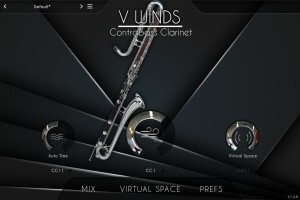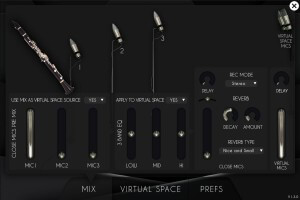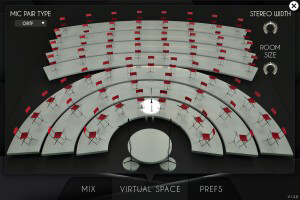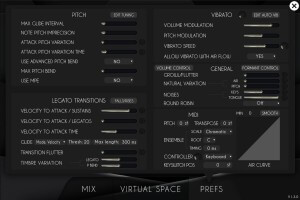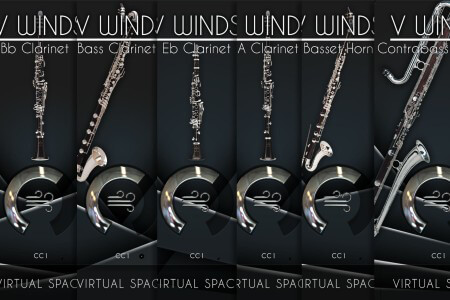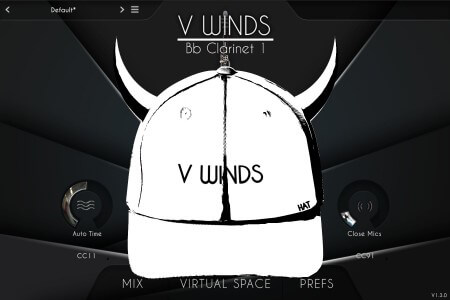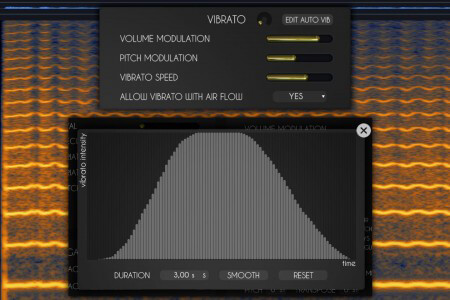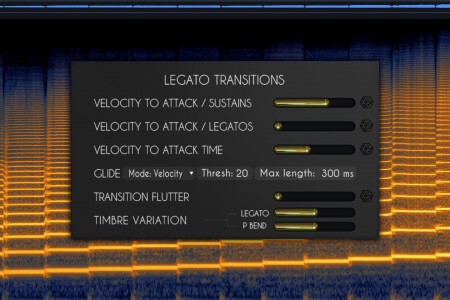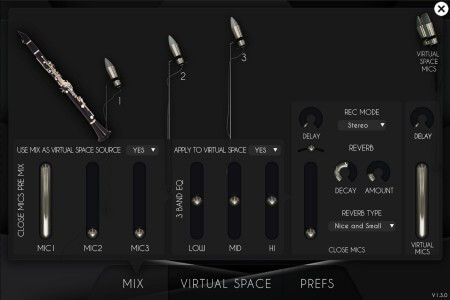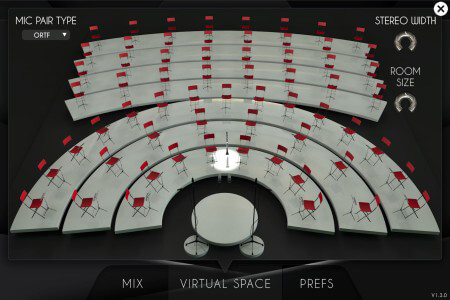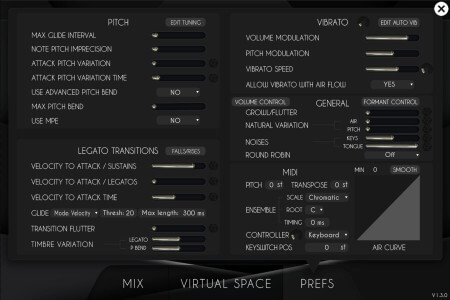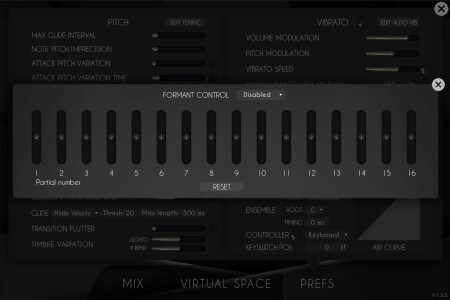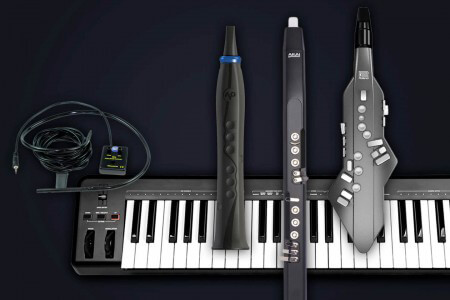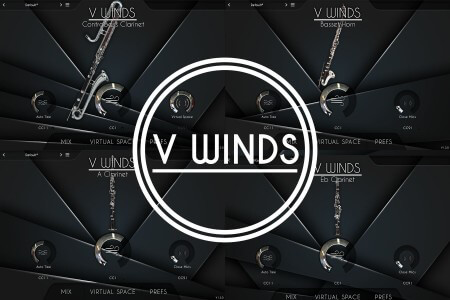SAMPLING MEETS MODELING, AGAIN & AGAIN
We sampled/modeled 2 B-flat clarinets, 2 Bass clarinets, 1 E-flat clarinet, 1 A clarinet, 1 Basset horn and 1 Contrabass clarinet, each performed by different world-class musicians. The two versions of the B-flat and Bass are separately recorded individual instruments, to offer variety of tone and colour.
Like the rest of the VSeries, our core goal is to make these instruments easy to use right out of the box, without the need for key switches or multiple CCs, and controllable with just the air flow. However, for this library we have gone as far as to update the airflow control itself, in what we believe is a world first in any sample library. We examined in detail the link between air and pitch, and incorporated our findings into this library. The result is an added layer of realism, which will be heard and identified by those with trained ears, but 'felt' by everyone.
The VWinds Clarinets interface

VWinds Clarinets contains 8 instruments:
2 B-flat clarinets, 2 Bass clarinets, 1 E-flat clarinet, 1 A clarinet, 1 Basset Horn and 1 Contrabass clarinet.
We recorded two of the more commonly used clarinets (B-flat and Bass) to offer a variety of tone and colour, but the E-flat, A, and even the Basset Horn could be employed as a 'general clarinet' sound for certain projects.
Thanks to our proprietary H.A.T. (Harmonic Alignment Technology), VWinds Clarinets is not just another heavily multisampled instrument - you can play articulations yourself just like a live player would, using only a MIDI controller (or even by simply drawing the automation in!). There are no complicated keyswitches involved to play staccatos or fast legatos or anything else - it's just a case of playing it live as you think it should sound.
Simply play a note, adjust the air flow, and that's it! Vibrato is automated by default, but this can be customized or even just controlled manually.
We carefully measured the different parameters that change when a player uses vibrato, and we combined everything into a hyper-realistic and extremely adjustable vibrato, specifically tailored for each instrument.
There are multiple ways to control the vibrato: automatic, automatic depending on time, and completely manually. Vibrato can also be replicated to an extent by using just the air flow, in order to replicate the diaphragm movement of a live musician.
We spent considerable time and effort carefully extracting every minor detail of recorded transitions in order to give a variety of customizable legato transitions, and to help make the Clarinets as indistinguishable from a live performance as possible.
These transitions range from lightning-fast changes to extremely slow bends, with and without extra attack. We made sure to cover all of this, and you’ll see that this is all controllable in the interface. The legato behavior can even be randomized to help give a more human-like performance.
Recording a woodwind instrument can be done in various ways and at different positions. We used 3 different microphone positions to offer a variety of sounds whilst maintaining the crystalline sound of our VSeries instruments.
Various microphone positions can produce even better results when using the "virtual space”, detailed below, where there are 4 options for microphone configurations.
You can also apply reverb and EQ within the interface to prepare the sound to your taste before even starting with external plug-ins.
The virtual space perfectly reproduces what a real recording of an ensemble would be, using convolution.
When recording an orchestra, a pair of microphones is usually placed in front of the musicians and they naturally take position in the stereo field depending on where they are in the room.
The Virtual Space does exactly the same thing: you can place the musician wherever you like on a big stage.
When using this with multiple tracks, you immediately have the feeling of being in front of a real woodwind section.
There are an endless number of ways to play a woodwind instrument, and we had to make a careful choice on the default settings based on our interaction with world-class players, but many of the options can be customized to your taste.
Furthermore, most settings can be randomized for more human-like and unpredictable results.
VWinds is already highly customizable, but to add even more variety, each harmonic of the sound can be adjusted.
For even more versatility, the pitch and volume of every note is adjustable, meaning the instrument can be completely tailored to your needs.
VWinds can be played using a keyboard by selecting the notes on the keyboard and controlling the air flow with a MIDI controller, such as a modulation wheel or a breath controller.
You can also use a wind controller like an EWI, an Aerophone, a Sylphyo or any other brand - in order to do this the appropriate controller must be selected from the controller menu in the MIDI section.

If multiple instruments are loaded at the same time, their notes will be performed at exactly at the same time.
We added some smart features that can change the timbre of the instruments, transpose everything by a fixed interval and also act on the MIDI performance.
For example, you can have all 8 instruments with a different transposition value playing the same C minor scale, so no matter what you play on the keyboard, it will sound in key.





































